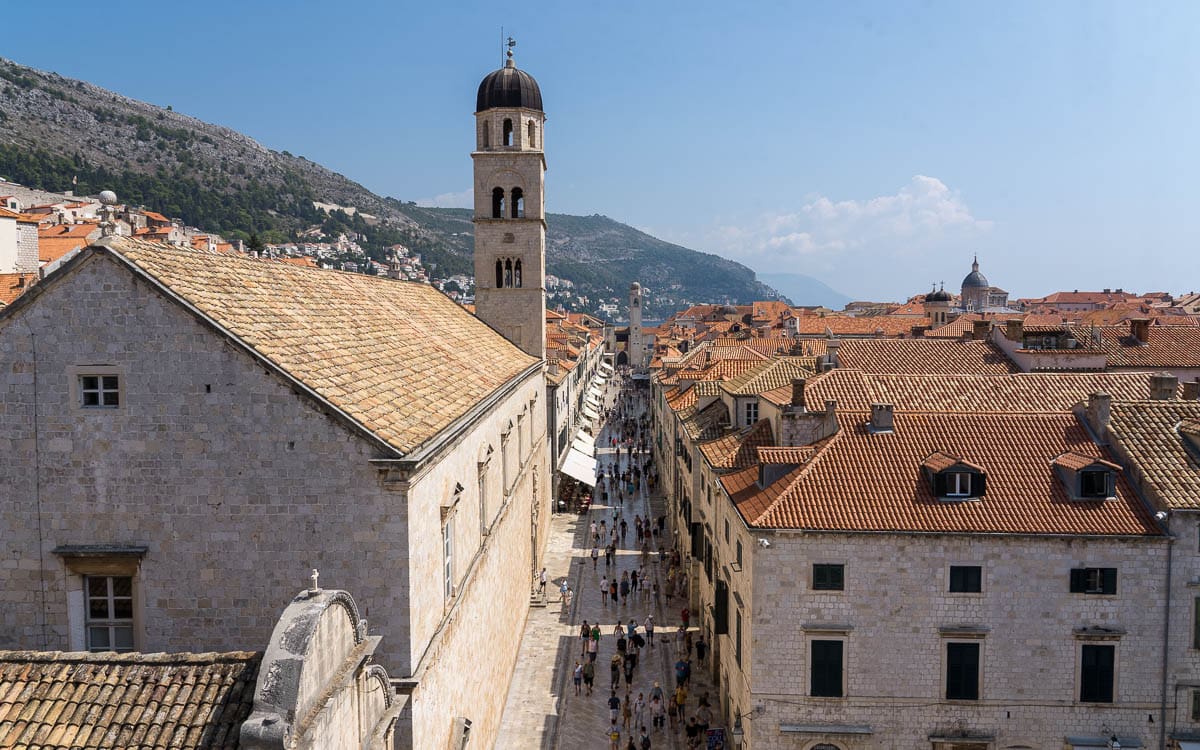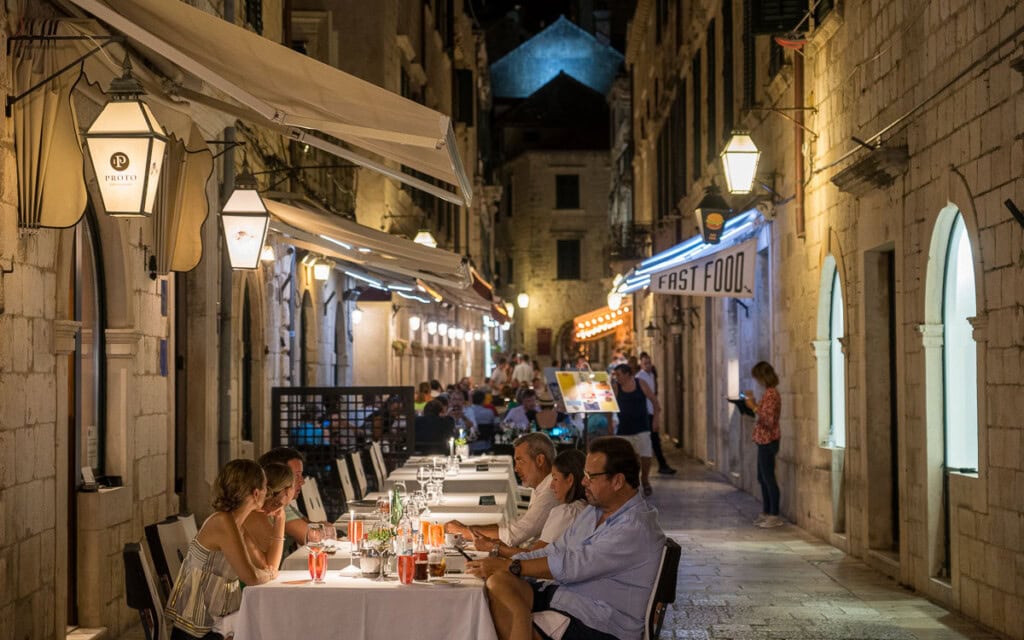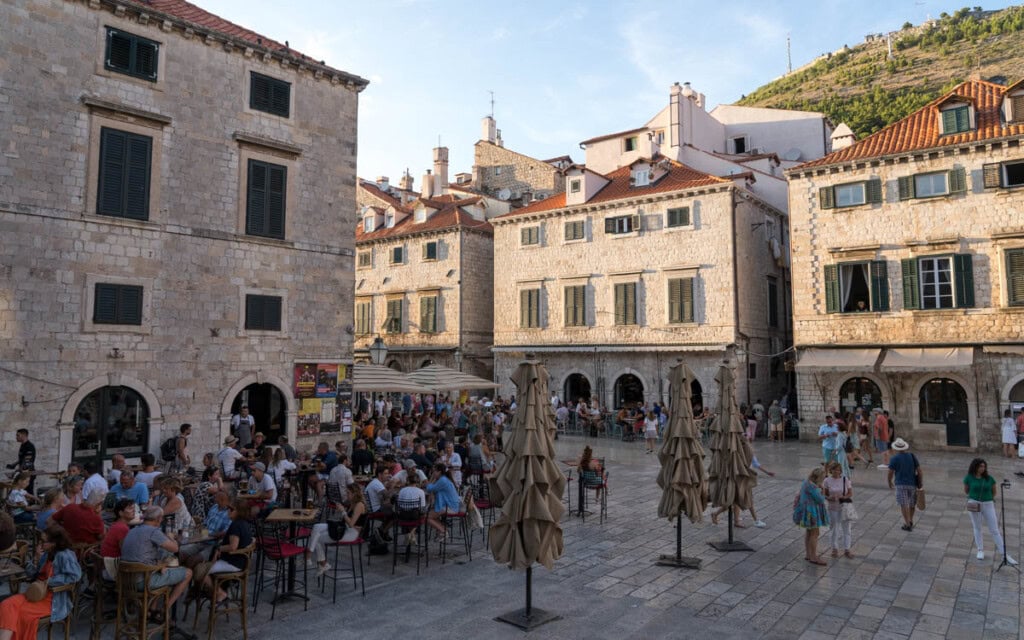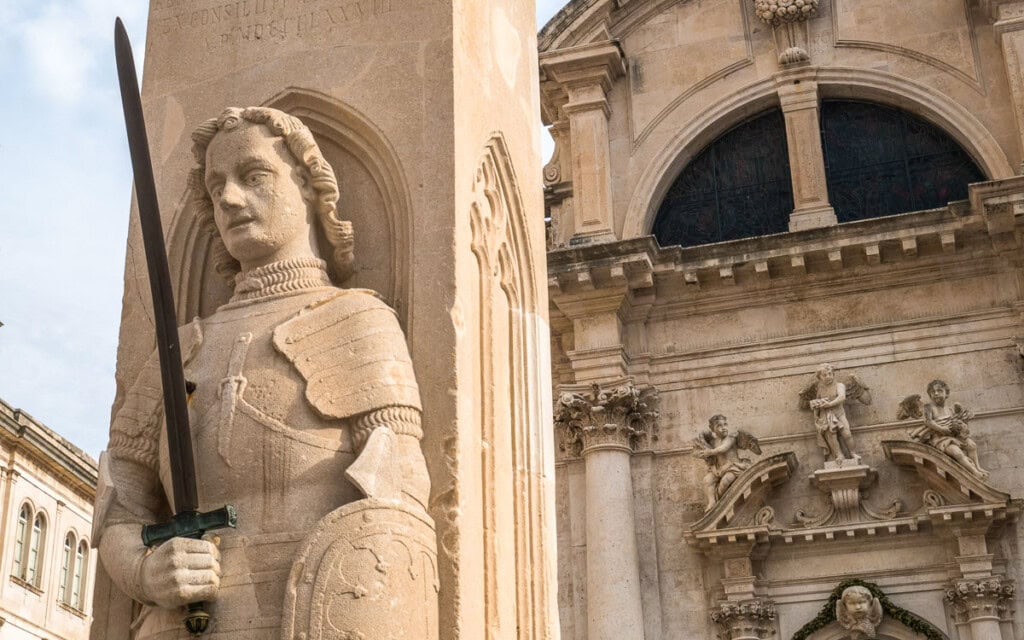
Stradun, officially Placa, is Dubrovnik’s main street, stretching 300 meters from Pile Gate in the west to Luža Square in the east. Along the limestone-paved street, which cuts through the heart of Dubrovnik, are many historical sights, restaurants, bars, cafes, and shops.
Along Stradun, you will find some of Dubrovnik’s most important sites, including the Large Onofrio’s Fountain, Sponza Palace, the Church of St. Blaise, and Dubrovnik Bell Tower.
The name “Placa,” commonly used by locals, comes from the Latin word “plateau,” meaning “broad street.” The name “Stradun” comes from the Venetian word “stradone,” meaning “big street,” derived from Italian “strada.” This name reflects the historical ties between Dubrovnik and Venice.
Before the 11th century, the area where Stradun is today was a marshy channel separating two settlements, Ragusa and Dubrava. Roman refugees lived on the island of Ragusa, while Slavs settled on Dubrava mainland.
In the 11th century, the marshy channel was filled, connecting the two settlements and forming Stradun. In the 13th century, Stradun became the main thoroughfare of Dubrovnik. By 1468, the street was fully paved in limestone, as it looks today.
The 1667 Dubrovnik earthquake and subsequent fire destroyed much of the city, including the original buildings along Stradun. To prevent a similar incident, the government decided to rebuild the buildings in the city in a uniform Baroque style, with shops on the ground floor and living quarters on the floors above.
Stradun has been a popular hub for merchants for centuries and remains so today. Many souvenir shops and other stores still line the street. As you walk down the street, notice the distinct P-shaped shop windows designed to provide maximum views of goods.
The street is home to many restaurants and cafes, as well as shops. Along the street, you will find taverns (konobas), seafood restaurants, Italian restaurants, bistros, snack bars, and gelaterias selling homemade gelato.
Stradun is also home to festivals throughout the year, including the Festivity of Saint Blaise, the Dubrovnik Summer Festival, the Dubrovnik Winter Festival, and New Year’s Eve celebrations.
Stradun Information
Hours
24 hours
Admission
Free
Address
Stradun, 20000, Dubrovnik, Croatia
GPS Coordinates: 42.64136,18.10897
Map
Nearby Sights
Prijeko Street

Prijeko Street is a charming, narrow medieval lane that runs through the heart of Old Town Dubrovnik, just north of Stradun, the main street. Known locally as Ulica Prijeko, the street is lined with Baroque-style houses. Today, it's home to a mix of restaurants, cafés, and boutique accommodations. Prijeko Street runs parallel to Dubrovnik's main thoroughfare, Stradun, about 50 meters uphill to the north.
Siroka Street

Siroka Street, or Široka ulica, is a picturesque and notably broad street located in the heart of Dubrovnik's Old Town. The street, today lined with numerous restaurants, cafes, and shops, was once an important thoroughfare providing quick access to the granary building located up the street.
Luža Square

Luža Square, at the eastern end of Stradun, is one of Dubrovnik's busiest and most historically significant central squares. It has been an important meeting point for centuries and is home to some of the city's most significant landmarks, making it a must-visit spot in the Old Town. Since the Middle Ages, Luža Square has been a central meeting place for citizens of the Republic of Ragusa, present-day Dubrovnik.
Orlando's Column

In the center of Luža Square, on the eastern end of Stradun, is Orlando's Column, a historic stone monument dating back to 1418. Carved into the statue is a heroic medieval knight who defended Dubrovnik from invaders. In 1418, Bonino di Jacopo, an Italian master sculptor from Milan, built the column with the help of local sculptor Antun Dubrovčanin.